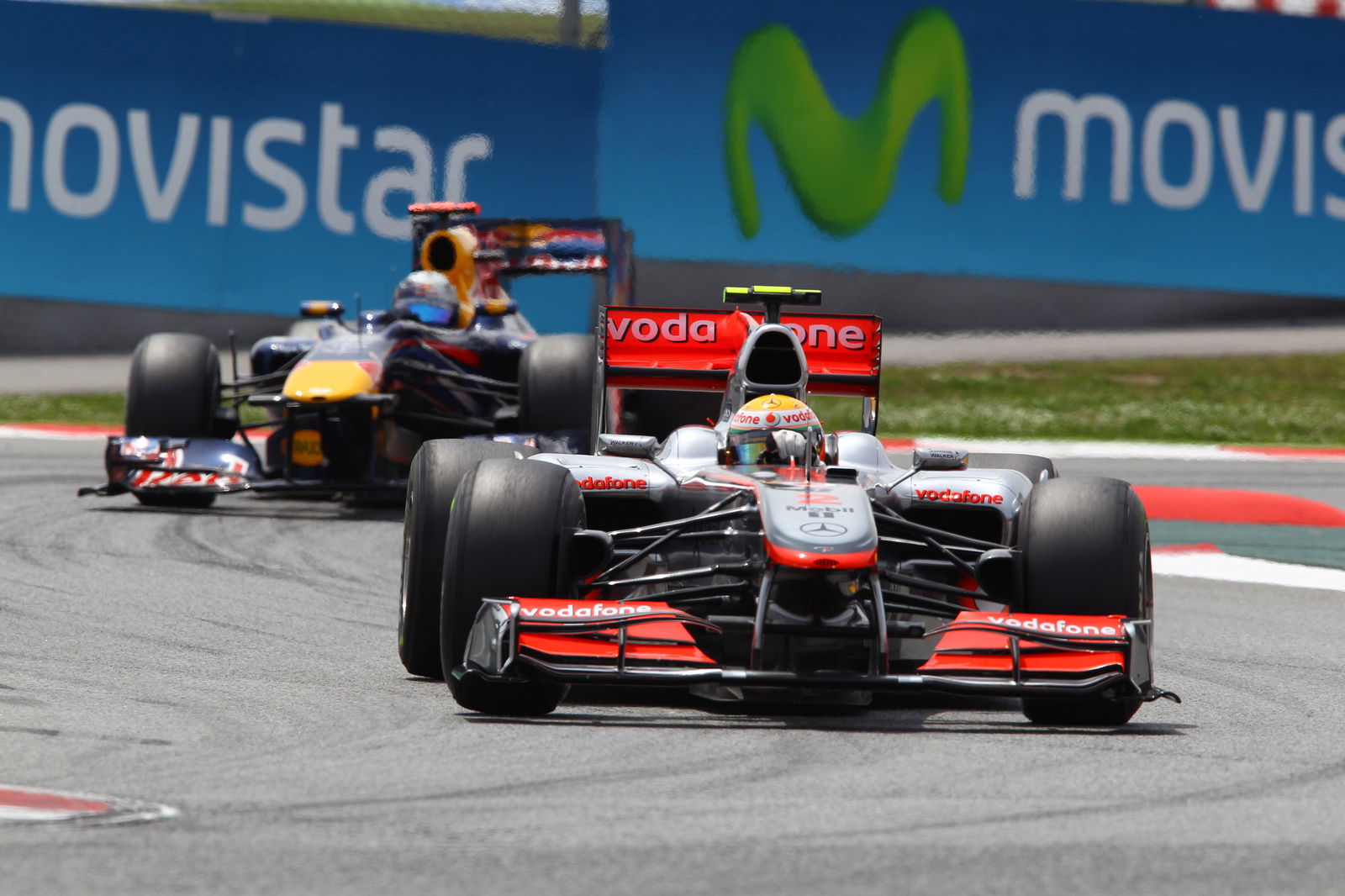Controversial F-duct to be banned by 2011
The contentious, McLaren-Mercedes pioneered F-duct aerodynamic innovation is to be banned from F1 in 2011 following an overwhelming vote against it from the other teams - after Fernando Alonso's one-armed driving in the Spanish Grand Prix last weekend raised concerns both about the system's safety and that it might trigger an expensive new 'arms race' in the top flight in an era of overriding cost-cutting.
Operated by drivers alternately blocking and unblocking a hole inside the cockpit with either their hand or their knee, the F-duct - which cleverly circumvented the regulation that F1 cars may carry no moveable aerodynamic appendages - diverts air flow to reduce drag and thereby improve straight-line speed.
However, after Ferrari introduced their own rather more radical and potentially dangerous interpretation of the concept in Barcelona, double world champion Alonso was seen manually opening and closing the air vent whilst out on the track - thereby meaning the Spaniard had only one hand on the steering wheel at speeds of up to 200mph, and when adjusting his brake bias with his other hand, no hands at all.
Whilst the Oviedo native downplayed any fears that he was not in full control of his car - insisting that he is able to close the hole through a pad sewn into his left glove and that 'this method is now automatic' - during a Formula One Teams' Association (FOTA) meeting at the Circuit de Catalunya on Sunday, McLaren was unable to successfully persuade its fellow competitors that the F-duct should stay.
"It is a clever piece of engineering and hats off to the guys who invented it," Red Bull Racing team principal Christian Horner told Reuters, "but some of the solutions this weekend look a bit marginal when you see drivers driving with fingertips and no hands. I think there is a safety issue and a cost issue to take into account - and the majority voted through not to have it next year."
"By the end of this year I know that we - and I'm sure most of the other teams - will have an F-duct on the car and I'm sure that just neutralises the advantage of having it," added Mercedes Grand Prix CEO Nick Fry, who advocated the need for similar non road-relevant developments in F1 to be 'nipped in the bud'. "I think on the F-duct in particular there are other ideas that one can come up with and that the engineers have already come up with which are even zanier than that.
"When I look at some of the things our engineers have come up with and which on the face of it apply the same principles, they are zany in the extreme and it is difficult to see how they would be used elsewhere - plus they would be expensive. I know it's disappointing for those that invent these ideas, but I think what people have got to get used to is that, like the double-diffuser, they may be fairly short-lived. If it isn't a useful technology then it comes off; what we should be encouraging is stuff that we can use elsewhere."
The double-diffuser was contentiously introduced by Mercedes' predecessor Brawn GP, Toyota and Williams at the beginning of last season, and played a significant role in the former's early dominance and ultimately title-winning run. The device was officially declared legal by governing body the FIA in April - but by then the Brackley-based outfit had already pulled just too far out of reach to be caught. Double-diffusers have likewise been outlawed from next year onwards.
